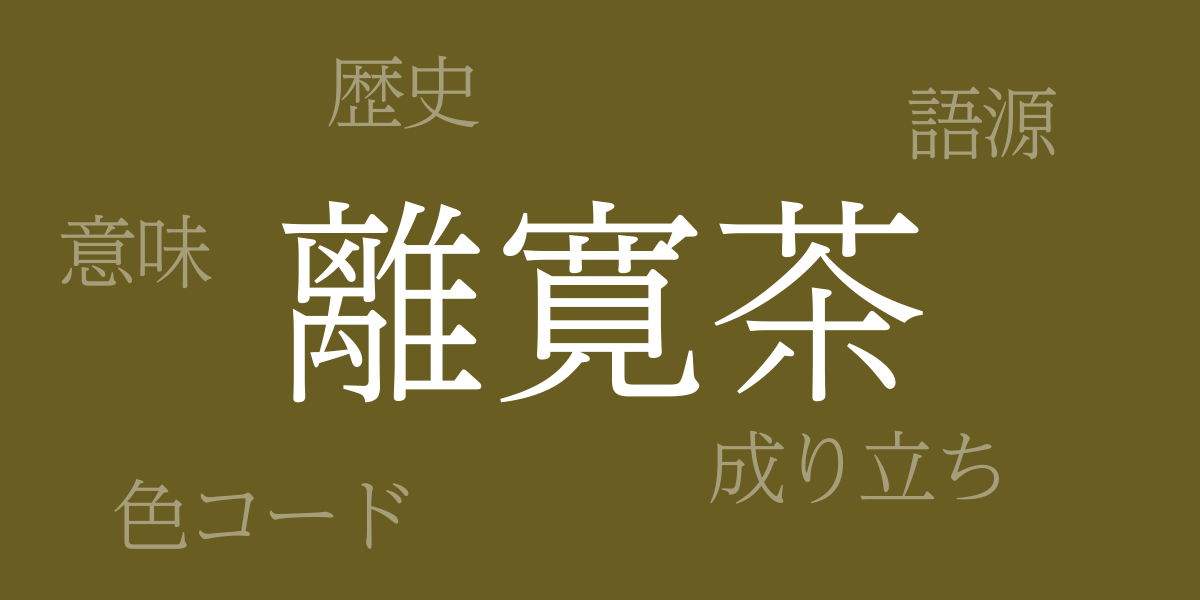Japan’s traditional colors, born from its rich nature and history, have captivated designers and artists worldwide. Among them, “Rikancha” (離寛茶 – りかんちゃ) stands out with its unique hue and storied background, enchanting many with its depth and warmth. This article explores the allure of Rikancha, delving into the color’s significance, history, and contemporary applications.
About Rikancha (離寛茶 – りかんちゃ)
Rikancha (離寛茶 – りかんちゃ) is a traditional Japanese color, a warm greenish-brown that symbolizes Japan’s natural landscapes and cultural artifacts. Beloved across various fields from traditional crafts to modern design, Rikancha’s name is said to derive from an anecdote involving a monk, linking it deeply with Japanese spirituality.
The History of Rikancha
The origin of Rikancha’s name is associated with Rikan, a monk from the Edo period. The color is said to be inspired by the hue of the robes he wore, which has been cherished and passed down through generations. The color has also been prized in Japanese tea ceremony culture, used in tatami mats, walls, and tea utensils, reflecting its deep connection with traditional Japanese culture.
Rikancha Color Codes
For digital designs and printing where accurate color reproduction is necessary, the following color codes for Rikancha can be referenced:
- HEX: #6A5D21
- RGB: R:106 G:93 B:33
- CMYK: C:63 M:60 Y:100 K:19
Western Name for Rikancha
In English, Rikancha is sometimes referred to as “Rikancha,” but the color is akin to “Olive Drab” or “Dark Olive Green” in Western terms. However, no direct translation fully encompasses Rikancha’s historical and cultural nuances, emphasizing the importance of understanding its background to truly appreciate its unique Japanese connotations.
Conclusion on Rikancha
Rikancha holds a special place as a traditional Japanese color due to its serene hue and historical significance. Beyond its applications in design and art, understanding the meaning behind the color deepens appreciation for Japanese culture. Integrating Rikancha in contemporary works can add a unique texture and narrative quality, continuing to convey Japan’s aesthetic sensibilities to the world.

























